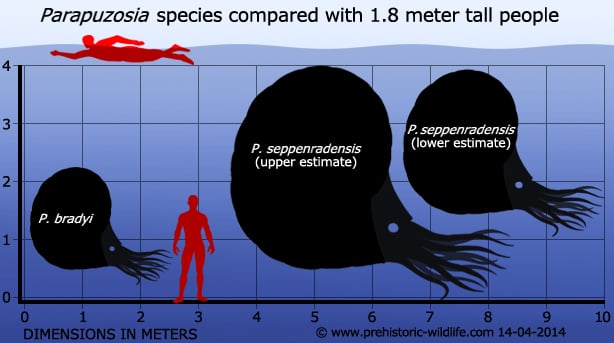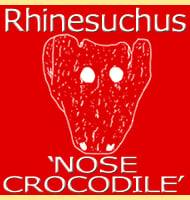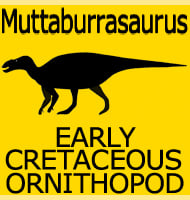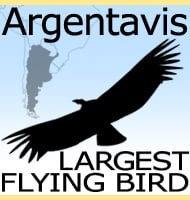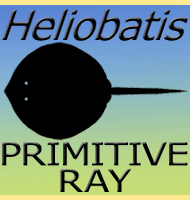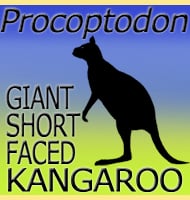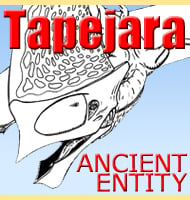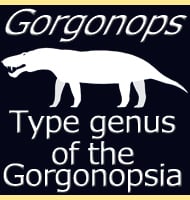In Depth
Parapuzosia was once named as a species of the Pachydiscus genus in 1895 by Hermann Landois, but was renamed as a distinct genus in 1913 establishing Parapuzosia seppenradensis as the type species. Today the species of the Parapuzosia genus are regarded as the largest ammonites that are currently known to us. The largest Parapuzosia bradyi had a shell that measured one hundred and forty by one hundred and eighty centimetres, making it the largest species of Ammonite known from North America.
Even bigger though was Parapuzosia seppenradensis from Europe. The largest known shell of this has a maximum diameter of around one hundred and eighty centimetres, but this is the measurement for the incomplete shell. In life and when complete this shell is thought to have been anything between two hundred and fifty-five centimetres and three hundred and fifty centimetres across. Though the exact size of Parapuzosia seppenradensis is a matter of debate, it is still regarded as the largest ammonite currently known to us.
Ammonites like Parapuzosia are perceived to have been pelagic (open water) predators of other oceanic organisms. These may have included fish, other cephalopods including squid and even other ammonites, as well as possibly even smaller marine reptiles if they could catch them. As far as locomotion goes, Parapuzosia would have had a siphon pointing out of the shell that could shoot out water like a jet, just like we can see in other cephalopods such as squids, octopuses, cuttlefish and nautilus. It’s probable that Parapuzosia may have had a greater range of vertical movement in the water column as opposed to distance travel given that such behaviour has been observed in squid and nautilus.
When a Parapuzosia had a prey item such as a fish within its tentacles, the prey would have been manipulated and positioned to be near the mouth. This would have been a strong, very tough beak that could slice flesh as well as crush shells and bones. Parapuzosia may have been prey to other predators themselves however. When still growing up they may have been preyed upon by sharks with exceptionally tough teeth like Cretoxyrhina, as well as mosasaurs such as Globidens and Prognathodon which had specially adapted teeth for cracking and breaking up the shells of armoured prey. Even larger Parapuzosia may not have been safe from the largest mosasaurs such as Tylosaurus and Mosasaurus that through sheer size might have still had the jaw power to break open a Parapuzosia shell.
Further Reading
-Die Riesenammoniten von Seppenrade, Pachydiscus Zittel Seppenradensis - Jahresbericht des Westf�lischen Provinzial-Vereins f�r Wissenschaft und Kunst 23: 99–108. - H. Landois - 1895. - Parapuzosia (Parapuzosia) seppenradensis (Landois) und die Ammonitenfauna der D�lmener Schichten, unteres Unter-Campan, Westfalen. - Geologie und Pal�ontologie in Westfalen 33: 1–127 - W. J. Kennedy & U. Kaplan - 1995 - Ammonites and the Other Cephalopods of the Pierre Seaway. - Geoscience Press, Inc. p. 44 - Neal L. Larson, Steven D. Jorgensen, Robert A. Farrar & Peter L. Larson - 1997. - Two-phase increase in the maximum size of life over 3.5 billion years reflects biological innovation and environmental opportunity. PNAS 106(1): 24–27 - Jonathan L. Payne, Alison G. Boyer, James H. Brown, Seth Finnegan, Michał Kowalewski, Richard A. Krause, Jr., S. Kathleen Lyons, Craig R. McClain, Daniel W. McShea, Philip M. Novack-Gottshall, Felisa A. Smith, Jennifer A. Stempien, and Steve C. Wang - 2009.
